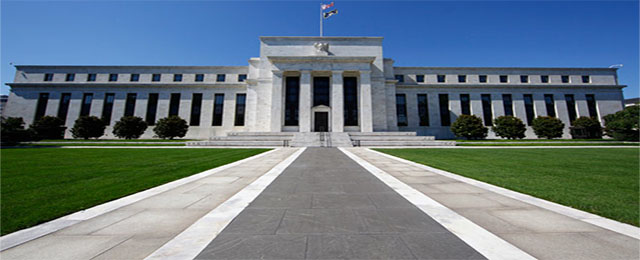There is a great deal of uncertainty about future monetary policy because the outlook for interest rates, inflation and real economic growth is inconsistent with the Fisher equation. The low interest rate outlook is inconsistent with 2 percent inflation expectations and a normal recovery. A normal recovery will lead to rising real interest rates and should make the nominal interest rate higher than the 2 percent coming from the inflation objective. The uncertainty arises because there are dramatically different ways that the inconsistency can be resolved. Consider three alternative scenarios:
- The Fed loses credibility, and we return to 1970s-style inflation. This is the concern of some FOMC members who have dissented on a regular basis. In this scenario, real interest rates continue to be low, but inflation expectations and the 10-year rate begin to rise rapidly. The Fed is forced to raise the fed funds rate as inflation accelerates. This seems an unlikely outcome, at least in the next year or two.
- The Fed maintains credibility, and people expect 2 percent inflation to continue indefinitely. The Fed is successful in engineering a recovery with a gradual rise in interest rates. Interest rates rise enough to prevent a loss of credibility, but not so much as to cause another recession. This is the outcome that is considered most likely by private and government economic forecasters.
- The Fed decides to keep rates exceptionally low until the economic data clearly demonstrate that the economy is at full employment. The problem with this scenario is that neither the Fed nor private-sector economists are able to predict turning points. The economy is likely to be well beyond ordinary measures of full employment before the data reveal that the threshold has been met. The Fisher equation suggests that keeping nominal rates low while the economy recovers will put downward pressure on inflation. In this scenario, interest rates and inflation stay well below normal for a long time. This outcome is more likely if forward guidance sets a lower threshold on the inflation target.
The reason it is so hard to predict which of these scenarios might play out is that the result depends so much on what people think will happen. Inflation expectations are the key. A surge in inflation expectations leads to the first scenario above. Expectations anchored at 2 percent will support the second scenario. Expectations of falling inflation or even of deflation are likely to lead to the third outcome, which is a concern because it looks so much like the Japanese economy from 1995 to the present.
Solution: Think outside the “monetary policy is interest rate policy/inflation target” box. Think a new target that will coordinate expectations in the right direction, avoiding both scenarios 1&3 and making an outcome like scenario 2 much less convoluted and safer. Think NGDPLT!
If you don´t want to be so ‘daring’, think “Australian-style monetary policymaking






Be the first to comment on "Interest rate-inflation targeting swan song"